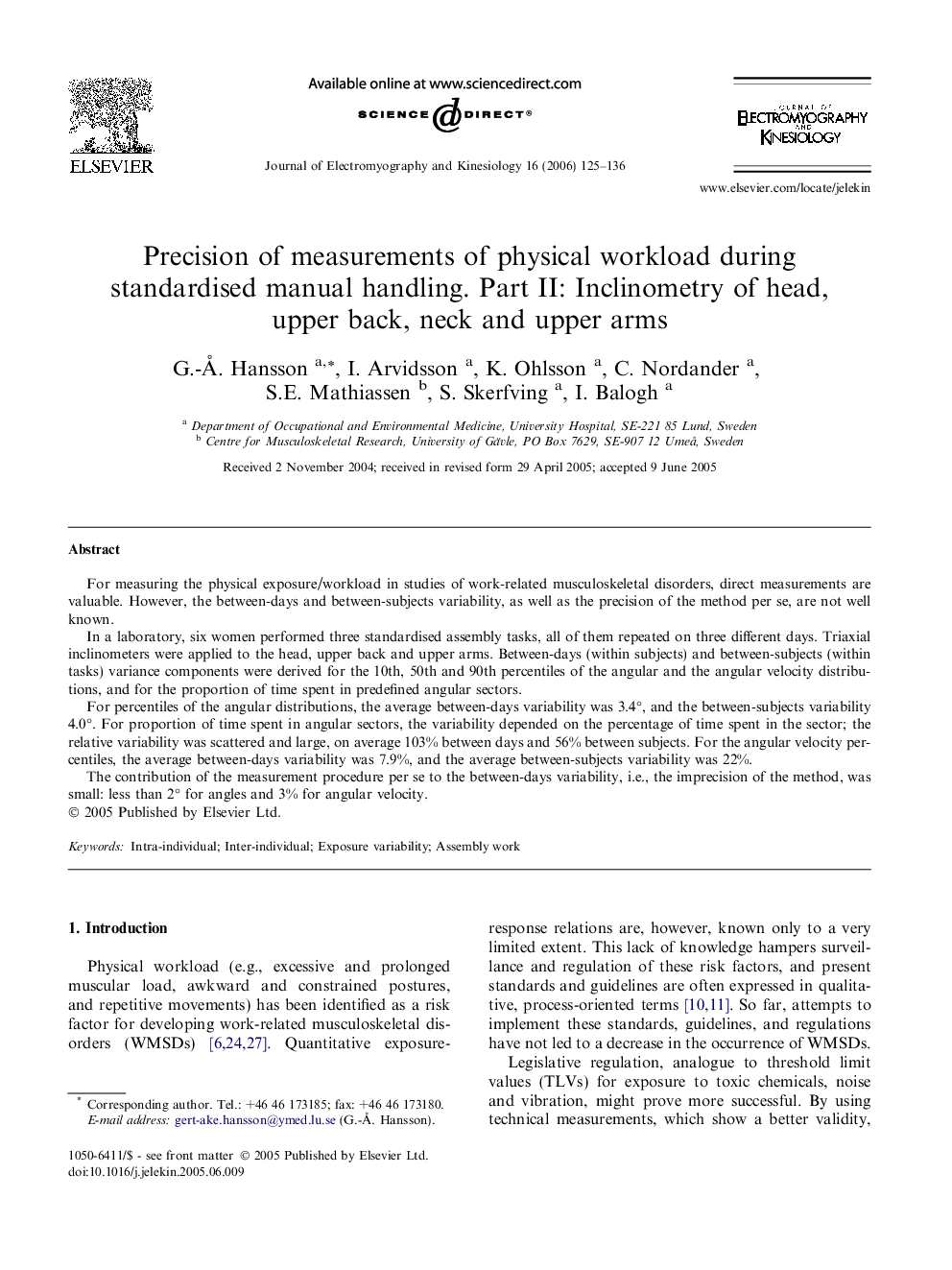| Article ID | Journal | Published Year | Pages | File Type |
|---|---|---|---|---|
| 4065666 | Journal of Electromyography and Kinesiology | 2006 | 12 Pages |
For measuring the physical exposure/workload in studies of work-related musculoskeletal disorders, direct measurements are valuable. However, the between-days and between-subjects variability, as well as the precision of the method per se, are not well known.In a laboratory, six women performed three standardised assembly tasks, all of them repeated on three different days. Triaxial inclinometers were applied to the head, upper back and upper arms. Between-days (within subjects) and between-subjects (within tasks) variance components were derived for the 10th, 50th and 90th percentiles of the angular and the angular velocity distributions, and for the proportion of time spent in predefined angular sectors.For percentiles of the angular distributions, the average between-days variability was 3.4°, and the between-subjects variability 4.0°. For proportion of time spent in angular sectors, the variability depended on the percentage of time spent in the sector; the relative variability was scattered and large, on average 103% between days and 56% between subjects. For the angular velocity percentiles, the average between-days variability was 7.9%, and the average between-subjects variability was 22%.The contribution of the measurement procedure per se to the between-days variability, i.e., the imprecision of the method, was small: less than 2° for angles and 3% for angular velocity.
